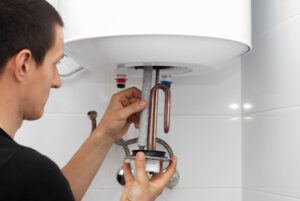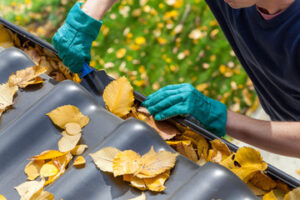Teeth Cleaning Las Vegas helps keep your mouth healthy and your breath fresh. It removes plaque and tartar buildup, which can lead to gum disease if not removed regularly.

Regular teeth cleaning can also remove surface stains from the tooth enamel and help prevent further discoloration. Other oral health techniques like oil pulling may also be beneficial.
When you brush your teeth, use a soft-bristled toothbrush and gentle strokes to clean all surfaces of the teeth and gums. It is important to brush the spaces between your teeth once a day, as well, because bacteria that linger here can lead to tooth decay. You should also rinse your mouth twice a day with water or mouthwash. When selecting a mouthwash, look for the ADA seal to ensure that it meets American Dental Association (ADA) safety and effectiveness standards.
You should change your toothbrush every three to four months, and keep it in a dry area. It is best not to share a toothbrush, as this can spread bacteria from person to person. You should also sanitize your toothbrush with a disinfecting agent, like rubbing alcohol, once or twice a week.
Your teeth and gums come under constant attack from food, drinks and the acids in your saliva, which can eat away at the enamel of your teeth and cause decay. Keeping your teeth healthy requires consistent brushing and flossing at home, as well as visiting the dentist for professional cleanings.
During a professional teeth cleaning, a hygienist may perform a number of procedures to help remove plaque and tartar that builds up on your teeth over time. The most common procedures include scaling and polishing, which use various tools to scrape off hardened plaque and smooth the surface of your teeth. Some patients require root planing, which is a deeper procedure to remove severe plaque and rough areas on the tooth’s roots.
It is important to visit the dentist regularly for teeth cleanings because it can help prevent disease in your mouth, as well as other parts of your body. Untreated cavities, for example, can lead to infections in the sinuses and jaw, and some oral bacteria can enter the bloodstream and cause pneumonia.
You should brush your teeth at least twice a day, for two minutes each time. Start with the outer surfaces of the front teeth and work your way around the insides and outsides of the other teeth, making sure to get the back molars and the upper biting surfaces of the chewing teeth. You should also brush your tongue to remove any bacteria build-up.
Flossing
Flossing removes food and bacteria from between teeth and along the gum line that your toothbrush cannot reach. It also helps prevent gum disease, tooth decay and bad breath. Flossing is an essential part of good dental hygiene and should be done daily.
Most people find flossing to be a bit uncomfortable at first, but with regular practice it becomes easier. If you floss too hard, you can damage the tissue between your teeth and cause pain. If you are not careful, you may also leave food or plaque behind, making your teeth even dirtier. Eventually you will find the right amount of pressure to use for a comfortable flossing experience.
There are many different kinds of floss to choose from. The most common is nylon floss, which comes in both waxed and unwaxed varieties in a variety of flavors. There are also dental floss picks and interdental brushes that you can use in addition to or as a substitute for traditional flossing. If you have difficulty handling traditional dental floss, you can try using an air or water flosser which shoots a jet of clean, compressed air or water between your teeth.
The best time to floss is at night before going to sleep, since there is less saliva in your mouth at that time and it is easier to remove plaque. If you have trouble getting used to flossing, you can always ask your dentist or hygienist for tips and tricks.
The main thing to remember is that it is important to floss every day, no matter what kind of floss you use. Keeping up with flossing will reduce the likelihood of developing gum disease, tooth decay and bad breath, and it will help you avoid expensive dental procedures such as cavity fillings or periodontal (gum) surgery. It will also keep your teeth looking great and give you a more radiant smile! So, remember to floss daily and schedule your regular dental cleanings and checkups twice a year! Keeping up with these simple habits will ensure that your teeth and gums stay healthy and strong for life!
Tongue Scraping
Using a tongue scraper is an effective way to reduce harmful bacteria and improve breath. It is a simple practice to incorporate into your daily oral care routine, but it does not replace brushing and flossing.
The tongue’s surface is covered with finger-like projections called papillae, giving it a rough texture. This carpet-like structure easily harbors food debris, odor-causing bacteria, dead cells, and plaque, which can contribute to bad breath and other oral health issues. Unlike toothbrushes, which only clean the outer layer of the tongue, tongue scrapers can remove these substances from the tongue’s surface more thoroughly, helping to freshen breath and improve mouth health.
Tongue scrapers are usually made from stainless steel or copper, which may have antimicrobial properties to reduce bacteria in the mouth. A good quality tongue scraper should have a smooth, rounded surface that is comfortable to touch and easy to maneuver.
Gently hold the tongue out in front of you, and place the rounded end of the scraper against the back of the tongue as far forward as you comfortably can. Start scraping in a gliding motion, moving the tongue from back to front to eliminate the coating of bacteria and food debris. You can use the scraper once or twice a day. Avoid pointing the scraper toward your gums or cheeks, which decreases its effectiveness and can cause discomfort.
Many people find that tongue scraping enhances their sense of taste. Older research has also shown that it can help to reduce the buildup of extra debris on the tongue, which can give it a white, coated appearance. A tongue scraper is a simple and inexpensive tool that can be purchased online or at most supermarkets and pharmacies.
Regardless of whether tongue scraping has positive effects, it is important to remember that it is not a cure-all for poor dental health. If a person has persistent halitosis that does not respond to brushing and mouthwash, they should see a dentist for a more thorough evaluation to determine the cause of their chronic bad breath. This may include assessing for dry mouth or other conditions that can lead to bad breath, such as leukoplakia or oral thrush.
Mouthwash
While it isn’t a replacement for brushing and flossing, mouthwash can help you remove food particles between your teeth, reduce bacteria, freshen breath and help prevent cavities. Many mouthwashes contain fluoride to strengthen your teeth and help prevent gum disease and plaque. However, it is important to read the label and follow the directions for the best results. It is also important not to use mouthwash right before eating as this can cause food particles to stick to your teeth and encourage bacterial activity.
Mouthwash can have a variety of ingredients that vary from product to product. Some are designed to be used in conjunction with a toothbrush while others are stand-alone products to help freshen breath and clean the mouth. Some of the most common ingredients include phenolic compounds, alcohols and essential oils. Essential oils (EOs) such as menthol, eucalyptol (1,8-cineole), thymol, methyl salicylate and hinokitiol possess antimicrobial (bactericidal or bacteriostatic) properties and can be effective in reducing halitosis.
Phenolic compounds and monoterpenes have a variety of beneficial properties such as antiseptic, antifungal and antioxidant. Some are used as flavoring agents while others have anti-inflammatory, analgesic and antiviral properties. The most common antiseptic in mouthwash is chlorhexidine. It has been shown to significantly reduce the number of germs in the mouth, including gum bacteria, which can lead to periodontitis.
Tooth decay is caused by bacterial acids that attack the enamel and break down tooth structure, eventually forming a hole in the tooth. The acids are produced by the bacteria within a biofilm on the surface of the tooth and can be prevented by regular brushing, flossing and using mouthwash.
Most mouthwashes contain a mix of anionic compounds that kill bacteria and cationic compounds that neutralize what your toothpaste has left behind. Some mouthwashes also contain alpha hydroxyl acids such as pyridoxine hydrochloride which have been shown to improve gum health. The type of mouthwash you choose will depend on your specific needs, but all rinses should be used in addition to a regular dental cleaning regimen and after meals. In addition, it is a good idea to change your toothbrush every three or four months and see your dentist for checkups twice a year.








